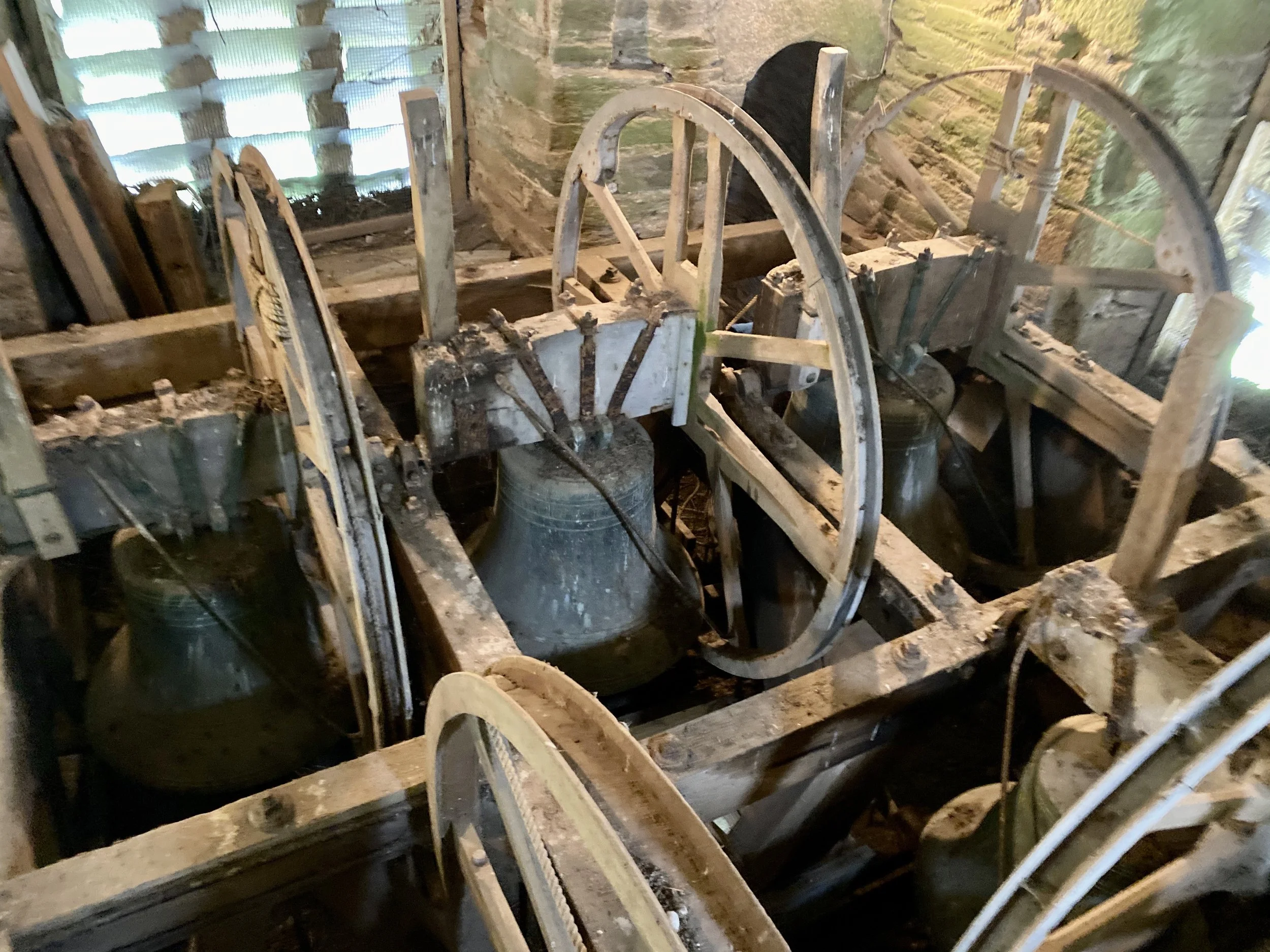Listen to the restored bells ringing outside the church and also inside. The ringers are now raised up a floor and clear glass has made the ringers visible, but the sound is quietened compared with outside.
THE BELLS ARE RESTORED!
The bells are rung regularly. Bell Practice is on Wednesday at 7.00pm. Why not come along and learn the art of ringing?
It is more than 100 years since the 6 bells at Lanteglos Church were last restored. They now need a major overhaul.
The Friends of Lanteglos Church have raised the £80,000 necessary for the restoration and booked John Taylor’s Bell Foundry in Loughborough to carry out the restoration.
The history of the bells goes back to 1549 when there were 3 bells in the tower. By 1670 two of the bells had cracked and the third had no ropes. They were then melted down and 3 more added in 1783.
In 1549 St Julitta’s church was already at least 300 years old. This was soon after the death of Henry VIII and at a time of great upheaval in the church following the dissolution of the monasteries and the Protestant Reformation led by Martin Luther and Thomas Cranmer. George Woolset had been Chaplain to Henry VIII and was appointed Rector to Lanteglos church by Henry’s son, Edward VI, Duke of Cornwall. This was when St Julitta’s church was in the process of changing from a Catholic to a Protestant church and when the 3 bells were placed in the tower.
The 3 original bells from 1549 are still in the tower, although they had to be melted down and recast in 1783 and two of them were cast for a third time in the late 19th century, presumably because they had cracked.
In 1670 there was a report on the 3 bells. The Rural Dean from nearby Michaelstow carried out his annual inspection of local churches, including St Julitta’s and he found that 2 bells were cracked and the third had lost its rope. He also reported that the church was neglected with seats broken and the floor uneven. This was not long after the English civil wars during which many churches were plundered and church bells melted down to make guns and bullets. Also at this time - between 1662 and 1671 - the Rector at Lanteglos, Jonathan Wills was ‘ejected’ from the rectory for being profligate! So there were a number of reasons why the bells and the church was in a state of disrepair.
In 1783 when George III was on the throne and trade was booming in England, the bells were recast and 3 more were added. This took place in a field in the ancient village of Helstone - about a mile away from Lanteglos. Casting bells in a field near the church was not unusual at that time, but Helstone seems rather far away, especially as the big tenor bell weighs 10 hundredweight (half a ton) The casting was carried out by the Pennington brothers who were part of a large family of bell-founders who cast about 1000 bells in the West Country over a period of 200 years.
Two of the original 16th century bells had to be recast again - probably the two cracked bells reported in 1670. This time by Warners in a field next to the southwest corner of St Julitta’s churchyard. Warners were based in London but worked around the country casting at least 2550 bells over 136 years.


